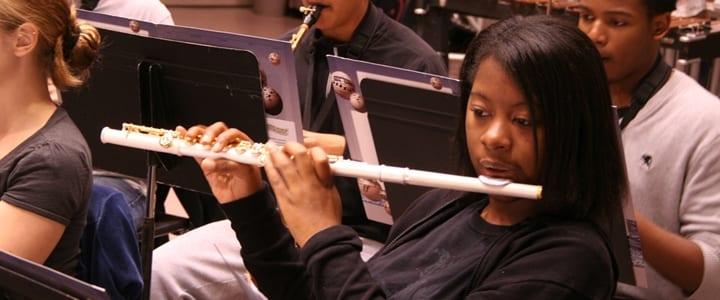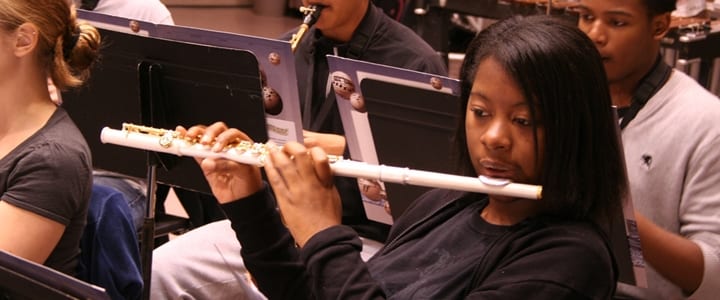Want to learn to play the flute or improve your existing skills? Check out these helpful tips from New York flute teacher Nadia B...
So you’ve always wanted to learn to play the flute? Welcome to the club! The flute is a widely popular instrument that has been around for centuries.
Learning to play the flute can be a rewarding experience, but it’s not without its challenges. In this blog post, we’ll take a look at some of the most common challenges beginner flute players face and offer some tips on how to overcome them.
Is it Hard to Learn to Play the Flute?
Learning to play the flute can be a challenging but rewarding experience. So how hard is it to learn to play the flute? Here are a few tips to help you get started:
- Choose the right flute. There are many different types of flutes available, so it’s important to select one that is comfortable for you to hold and has the right tone for your musical needs.
- Get a good teacher. A qualified flute instructor can teach you the proper techniques and help you develop a good practice routine.
- Don’t be afraid to practice. It takes time and effort to learn any new skill, so be patient with yourself and set aside enough time each day to practice. With commitment and practice, you’ll be playing beautiful music in no time!
So is learning to play the flute hard? Only you can be the judge of that. Sign up for flute lessons today and check out the many benefits of doing so by watching the video below:
https://www.youtube.com/watch?v=SkQek4aJFgc
Learn to Play the Flute: Basics to Master
The flute is a beautiful sounding instrument that has been around for centuries. Playing the flute can be easy to learn, but there are some basics that you need to master before you can play with confidence. Below, we will cover some of the basics of playing the flute so that you can get started on your musical journey.
How to Hold the Flute
The first step to playing the flute is learning how to hold the instrument correctly. The flute should be held horizontally in front of you, with the keys facing towards your left hand. The headjoint (the part of the flute where you blow into) should be in line with your mouth, and you should place your lips lightly on the lip plate. Once you have positioned the flute correctly, you can use your right hand to support the weight of the instrument and stabilize it.
How to Make a Sound on the Flute
Now that you know how to hold the flute correctly, it’s time to learn how to make a sound on the instrument. To do this, you will need to blow into the headjoint while simultaneously covering all of the holes on the body of the flute with your fingers. This may seem like a difficult task at first, but with a little practice you will be able to cover all of the holes quickly and easily. Once you have covered all of the holes, you can produce a sound by blowing gently into the headjoint.
Practice Makes Perfect
The best way to improve your skills on the flute is to practice regularly. If you can commit to practicing for even just 15 minutes a day, you will see a significant improvement in your playing.
Start by practicing basic scales and simple melodies. As you become more comfortable with playing the flute, you can begin learning more complex pieces of music. You can also attend concerts and recitals so that you can hear how professional musicians play the flute and get inspired to improve your own playing.
How to Learn to Play the Flute – Beginner Challenges You Might Face
As you learn to play the flute, you may encounter some challenges as you grow, learn, and improve. Read on to discover the most common issues I see my flute students facing, and tips to overcome them so you can play at your best.
“I don’t have enough air to play that passage!”
While you may feel that you don’t have enough air, you usually have enough, or even too much. As you play a long phrase and feel the air being used up, your mind usually takes over and reminds you that you still have to make it to the end, so you had better start squeezing out the air… that’s where the problem comes in. If you try to squeeze out the air, you are contracting lots of large, powerful muscles, which actually prevents you from using up the rest of the air inside the body. Then, you may gasp a breath of air at the end of that long phrase without having used up all the air you already had, creating an issue for the next phrase.
Here’s the way out of this vicious cycle: We actually don’t need as much air as we think we do. So when you’re getting ready to start a phrase, don’t gasp in air, or try to tank up. Just let some air naturally flow in (after all, when we have finished up the air inside of us, our bodies automatically respond to make room for air and bring it into the body) and then begin playing the phrase. Your body-mind knows how to manage the air based on the length of the phrase. If you feel like you’re starting to run out, sense the ground underneath you and see if you can allow your body to expand rather than contracting and collapsing in your body to squeeze the air out.
“The flute feels like it’s slipping” or “My pinky finger or thumb hurts from gripping to hold onto the flute.”
Finding a hand position that is effective, comfortable, and sustainable is the key. Too often I see students clenching the flute for fear of dropping it and developing hand pain or fatigue as a result.
It’s important to know that the flute is not just supported by the fingers. (Even if it were, our fingers are longer than most people realize—they start at the base of the hand.) To find a more supportive position, we can visualize a connection between our hands and our back, with our arms as the conduit. You can imagine your arms growing out of your back, and letting the fingers lengthen as the hand touches the flute. This gives you much more support for the flute, so that your back is doing the ‘heavy lifting’ rather than the hands.
Next, find a book and hold it with the fingers stretching out across the front or back cover of the book, and the thumb stretching out across onto the opposite cover. Imagine the fingers connecting to the thumb through the book. This relationship of the fingers and the thumb when holding a book is similar to how we should hold the flute. When the lines of the fingers and thumb in each hand are roughly parallel (but not held straight, simply curving and arched naturally) as we hold our flutes, this eliminates a lot of extra contorting and tightening of the fingers.
These two fundamental ideas should help you find a hand position that feels, looks, and ‘sounds’ better!
“My sound is fuzzy/thin/airy.”
Developing good tone is crucial since a clear, rich, and flexible sound allows us to have a wide range of tone color for expression. Most flute students try to manipulate tone quality by making changes to their embouchure.
While the embouchure is undoubtedly important, sometimes we can become preoccupied with it and forget that the sound depends on the quality of the whole body. When the body is free and open, there’s more room for the sound to resonate through us, which is infinitely better than a sound that is produced in the throat, cut off from the rest of the body by excessive tension and manipulated by too many changes in the embouchure. As you learn to relax your body, your embouchure will naturally respond to make the changes needed to facilitate a change in color, dynamic, or range.
To try this out, play a long tone and see if you can imagine the sound traveling all the way through your body. Mentally scan your body to see if there is muscular gripping anywhere in the body that is blocking the passage of the sound. After all, sound is vibration, and vibration needs space to occur.
With these ideas, your practice will be easier and more enjoyable!
Can I Learn Flute By Myself?
Many people want to learn how to play the flute, but they don’t want to take formal lessons. The good news is that it is definitely possible to learn how to play the flute by yourself! All you need is some dedication and hard work, and you’ll be playing beautiful music in no time. Here are a few tips to help you get started.
Start by Doing Some Research
The first step to teaching yourself how to play the flute is to do some research. Read books about the flute and watch videos about how to play. This will give you a good foundation of knowledge about the instrument and how it works. Once you have a basic understanding of the flute, you can start practicing on your own.
Find Some Helpful Resources
There are tons of resources available online that can help you learn how to play the flute. Look for beginner’s exercises and instructional videos. These resources will help you get started with playing the flute and teach you the basics of proper technique. Practice these exercises regularly so that you can master the basics before moving on to more difficult pieces.
Create a Practice Schedule
One of the most important things when learning how to play any instrument is to practice regularly. Create a practice schedule for yourself and stick to it as much as possible. It’s okay if you miss a day here or there, but try to practice at least a few times each week so that you can make steady progress. Dedicating even just 30 minutes each day to practicing will help you see results quickly.
Set Small Goals and Celebrate Your Progress
When learning any new skill, it’s important to celebrate your progress along the way. Set small goals for yourself and reward yourself when you reach them. For example, if your goal is to learn how to play a simple melody, give yourself a pat on the back (or maybe even an ice cream cone!) once you’ve mastered it. Seeing tangible results will motivate you to keep practicing until you reach your ultimate goal of playing complex pieces like a pro!
How Easy is it to Play a Flute for Beginners?
Learning to play the flute can be a rewarding experience, but it’s not without its challenges. In this blog post, we’ve taken a look at some of the most common challenges beginner flute players face and offered some tips on how to overcome them.
By following these tips – and signing up for flute lessons – you’ll be well on your way to becoming a proficient flutist in no time!
 Nadia B. teaches flute and piano in New York, NY, as well as through online lessons. She acted as principal flutist of the orchestra and wind ensemble at California State University, Sacramento, and then went on to receive her degree in Music Performance from New York University. Learn more about Nadia here!
Nadia B. teaches flute and piano in New York, NY, as well as through online lessons. She acted as principal flutist of the orchestra and wind ensemble at California State University, Sacramento, and then went on to receive her degree in Music Performance from New York University. Learn more about Nadia here!
 Photo by Andrew Allio
Photo by Andrew Allio
Suzy S.

